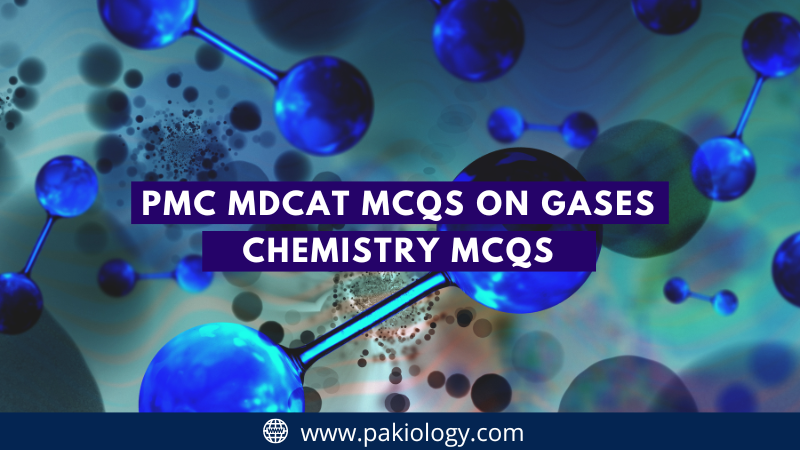In this post, we have covered the PMC MCQs from the chemistry chapter Gases. Here you will get all types of MCQs with different difficulty levels. In today’s post, we will cover the following topics of Gases.
-
- Postulates of kinetic molecular theory.
-
- The motion of particles of a gas according to kinetic theory.
-
- Values of standard temperature and pressure (STP).
-
- Effect of change in pressure on the volume of gas.
-
- Effect of change in temperature on the volume of gas.
-
- Significance of absolute zero, giving its value in degree
-
- Celsius and Kelvin.
-
- Ideal gas equation using Boyle’s, Charles’, and Avogadro’s law.
-
- Significance and different units of ideal gas constant.
-
- Distinguish between real and ideal gases
Page Contents
1. Kinetic Molecular Theory
Kinetic Molecular Theory (KMT) was developed by Dr. Robert A. Millikan in 1923. KMT is based on the idea that all matter is composed of atoms and molecules. Atoms are the smallest particles of matter that have mass and occupy space. Molecules are formed by grouping together several atoms. In order to understand how molecules interact with each other, we need to know their size, shape, charge, and mass.
2. Atomic Mass
The atomic mass of an atom is its total amount of protons and neutrons. The atomic mass of an atom can be determined using a mass spectrometer. The atomic mass of carbon-12 is 12 amu. Carbon-14 has an atomic mass of 14 amu.
3. Charge
Charge refers to the number of electrons surrounding an atom. An electron is negatively charged and has a negative electric charge. Protons have a positive charge and are positively charged. Electrons are attracted to the nucleus of an atom, making the atom’s outermost shell full. When the outermost shell is full, the atom is said to be neutral.
4. Size
Size refers to the diameter of an atom. Smaller atoms have smaller diameters than larger ones. The atomic radius of hydrogen is 0.74 nm. The atomic radius of helium is 1.40 nm. Hydrogen is considered the smallest atom while helium is the largest.
5. Shape
Atomic shapes are classified according to the number of electrons they possess. Spherical atoms have no net charge and thus do not attract or repel other atoms. Spherical atoms are called neutral atoms. Non-spherical atoms have a net charge and therefore attract or repel other elements. These atoms are known as ionized atoms. Ionic atoms are further divided into cations and anions. Cations have a positive charge and anions have a negative charge.
6. Mass
Mass is the weight of an object. Mass is measured in grams or kilograms. One gram equals 1000 milligrams. One kilogram equals 1000 grams.
MCQs On Gases
These MCQs are prepared from the PMC Chemistry chapter of Gases.
Chapter: Gases
Total MCQs: 65


Good